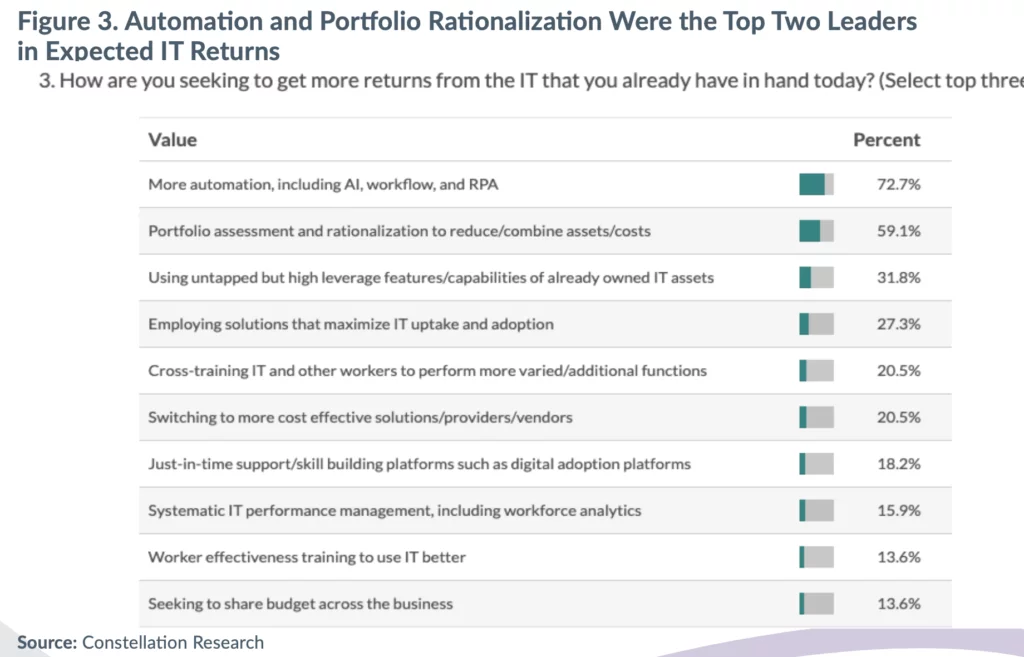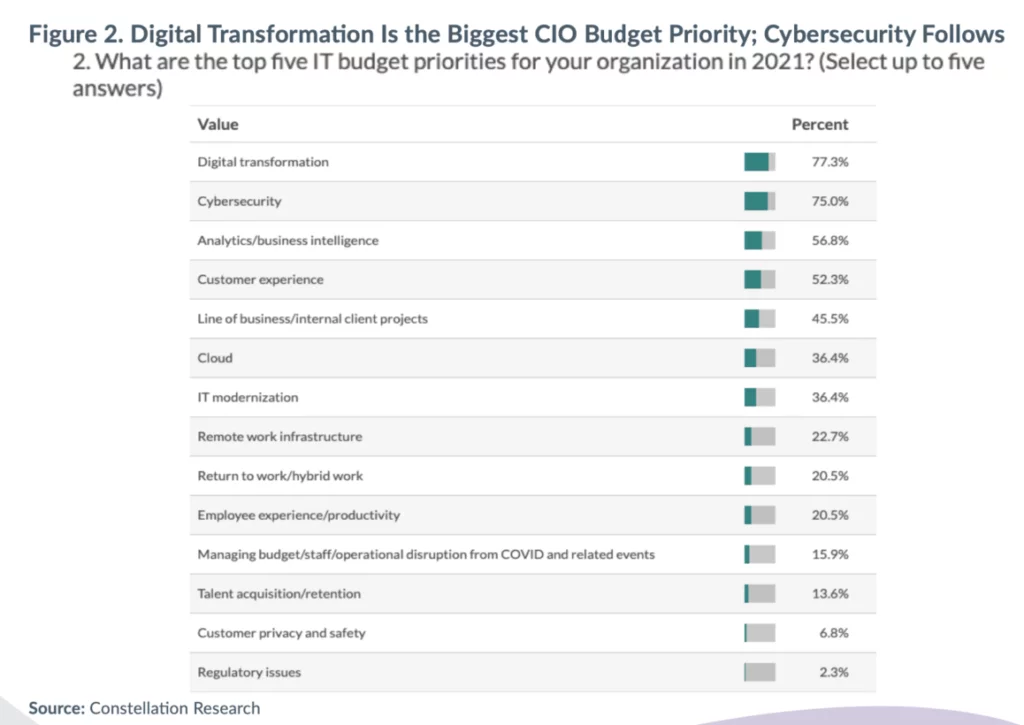2020 has come and gone, but it left a lasting effect on the expectations organizations have of IT leaders and their departments. WalkMe partnered with Constellation Research in order to survey 100 leading CIOs from around the world who made it clear: the desire for digital is stronger than ever.
With insights pulled from the CIO Outlook 2021: Delivering Business ROI at Scale report, we will break down the trends top IT leaders will use to set themselves apart in 2021.
#5 The rise of analytics and the Internet of Behavior (IoB)
Renowned management consultant Peter Drucker once said, “You can’t manage what you don’t measure.” With technology settling into every aspect of our daily lives, there are an infinite number of data points through which companies will be able to paint a picture of their employees’ and customers’ behaviors. By adopting platforms which help analyze this gold mine of information, IT leaders can glean insights about user journeys and streamline processes in real time.
While the optimists in us will enjoy having these experiences tailored to be custom-fit like a new dress or suit, it will be important to keep in mind the concern of privacy.
#4 Cloud migration
Having the freedom to expand infrastructure on-demand enables organizations to be more agile. In keeping up with lockdown regulations, lightning-fast software implementations can be completed without taking a step outside your home. Cloud companies, in comparison with those who are sticking with their on-premise platforms, are capable of providing access to everything their remote workforces need at all times. As an added bonus, by shifting to the cloud, CIOs are removing overhead costs associated with hosting legacy systems. The possibilities will only grow as the platform evolves.
#3 Hyper-automation
This is the concept that everything which can be automated, will be automated. The CIO Outlook 2021 report showed 72.7% of CIOs expect the greatest returns in IT from automation. Nearly half of the CIOs surveyed reported their IT support was greatly challenged by the demands of remote workers. Breaking down complex and tedious workflows into a single click reduces the enormous burden remote work puts on IT support teams.
Moving into 2021, employees and IT teams have the opportunity to become more self-sufficient through business process automation efforts. Whether through artificial intelligence (AI), robotic process automation (RPA), or digital adoption platforms (DAP), expect to see a spike in productivity and ROI once automated solutions are set in place.

#2 Flexible cybersecurity
Previously, on-prem solutions were always seen as a safer way to manage company information. By keeping company data within the perimeter of the workspace, the digital walls were much harder to breach. But when a global lockdown means the workplace is now dispersed, it requires a new level of security management–one which can adapt to the remote presence of cloud platforms and services.
With new levels of accessibility comes more opportunities to leak information. According to the CIO Outlook 2021 report, an impressive 75% of CIOs surveyed ranked cybersecurity in their top 5 budget priorities for 2021. Maintaining privacy through a web of secure remote networks will be critical for providers to build trust with their customers and keep employees safe as the reach of technology grows.
#1 Digital transformation
Taking the top spot over cybersecurity at the start of 2021, the number one priority of Fortune 500 CIOs surveyed by Constellation is digital transformation. It seems only fitting.
In order to keep up with the extreme shift in the world, organizations need to evolve with the changing needs of their customers and employees. Technology for business is no longer just a focal point of IT teams, but embedded across entire organizations. By taking the necessary steps to understand present challenges, companies can enhance an entire human experience through digital solutions.

Moving into 2021
As last year proved to us, nothing is certain. By keeping up with the times and – more importantly – thinking ahead, IT leaders are able to future-proof their organizations and prepare for anything.


